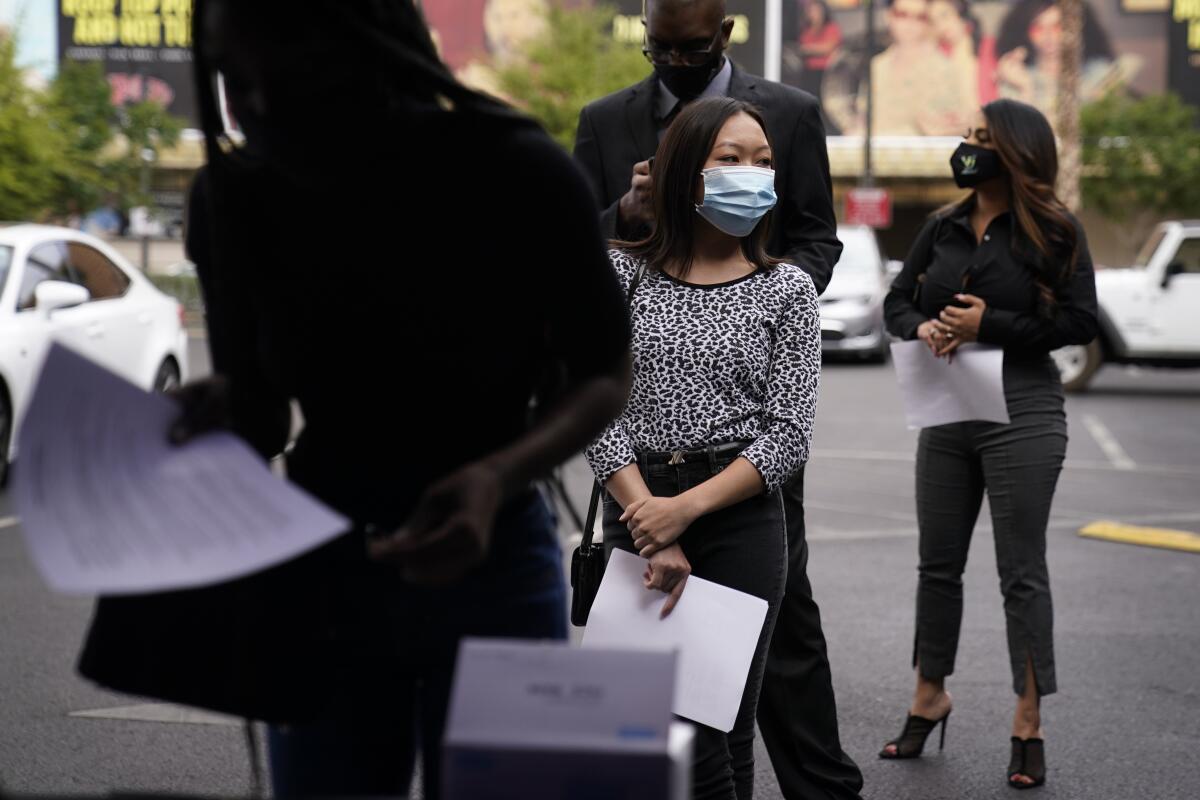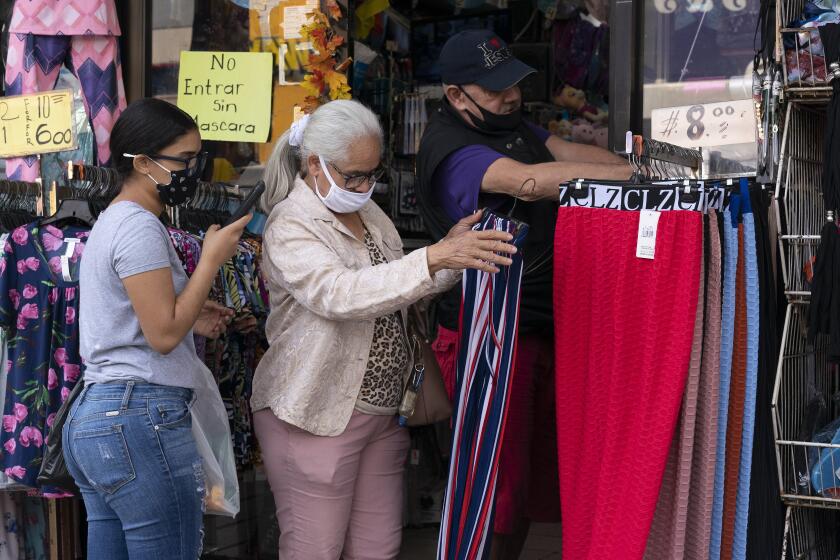U.S. jobless claims drop 13,000 to 553,000, lowest level since pandemic hit

- Share via
WASHINGTON — The number of Americans applying for unemployment benefits dropped by 13,000 last week to 553,000, the lowest level since the COVID-19 pandemic hit last year and another sign the economy is recovering from the coronavirus-induced recession.
The Labor Department reported Thursday that jobless claims were down from 566,000 a week earlier. They have fallen sharply over the past year but remain well above the 230,000 weekly figure typical before the pandemic struck the economy in March 2020.
The four-week moving average, which smooths out weekly gyrations, fell 44,000 to 611,750.
Nearly 3.7 million people were receiving traditional state unemployment benefits the week of April 17. About 16.6 million were receiving some type of jobless aid — including federal assistance to ease hardship from the coronavirus crisis — the week of April 10.
Unemployment claims are a proxy for layoffs, and economists have long viewed them as an early indicator of where the job market and the economy are headed. But the figures have become less reliable in recent months as states struggle to clear backlogs of applications and suspected fraud muddies the actual volume of claims.
The job market has been bounding back in recent months. Employers added an impressive 916,000 jobs in March, and the Labor Department is expected to report next week that they hired another 875,000 in April, according to a survey from the data firm FactSet.
Economic rebound is likely to grow even stronger, restoring millions of jobs and leading to the fastest growth this year since the 1980s.
The unemployment rate has dropped to 6% from a peak of 14.8% in April 2020. (Before the pandemic, unemployment was just 3.5% in February 2020.)
Employers are beginning to complain that they can’t find workers despite the elevated unemployment rate. Americans may be reluctant to return to work because they still fear contracting COVID-19 or because they need to care for children who haven’t returned to school.
Another factor could be a federal supplemental unemployment benefit of $300 a week, on top of state aid, that means some low-income workers can earn more from jobless benefits than they did from their old jobs.
More to Read
Inside the business of entertainment
The Wide Shot brings you news, analysis and insights on everything from streaming wars to production — and what it all means for the future.
You may occasionally receive promotional content from the Los Angeles Times.









